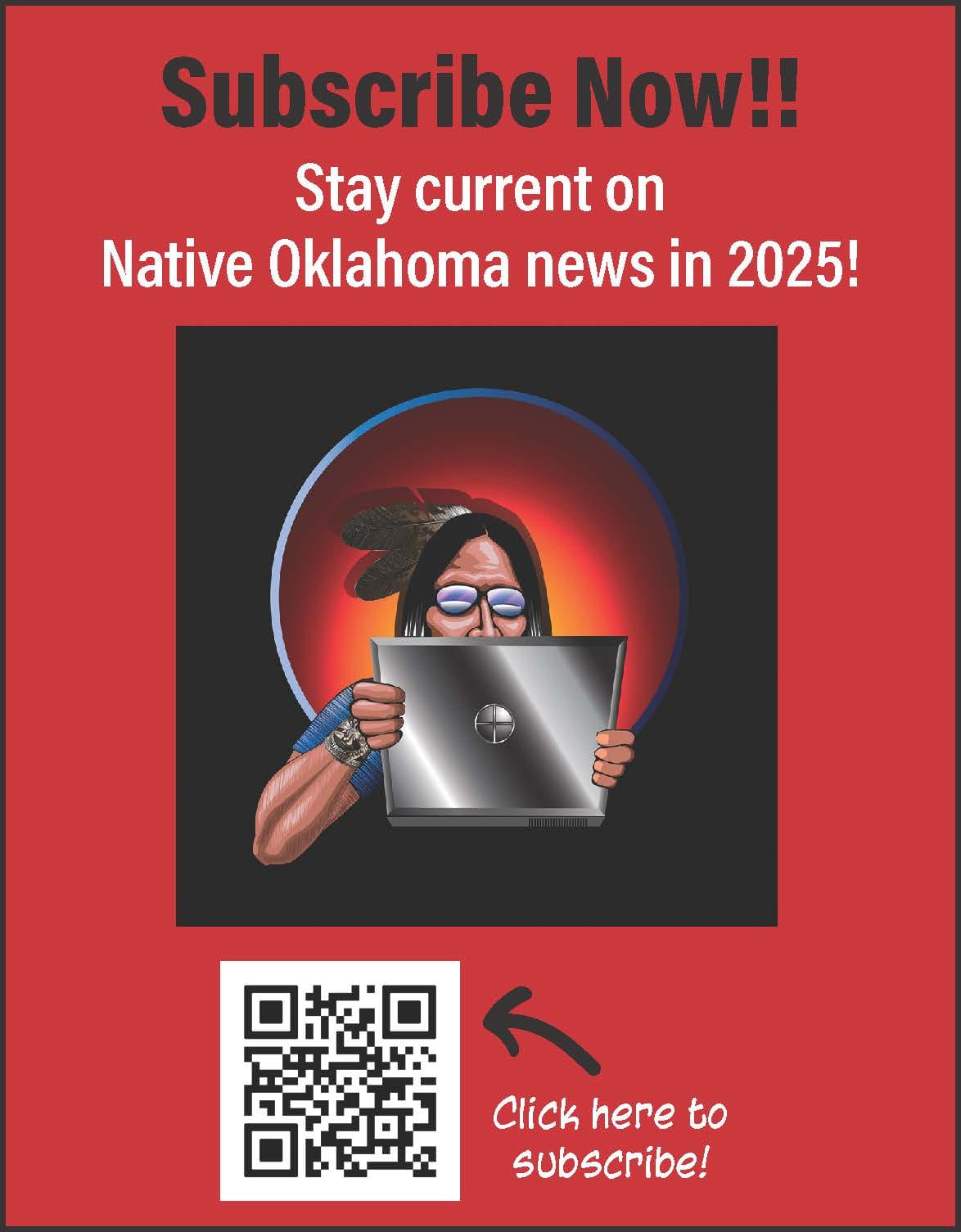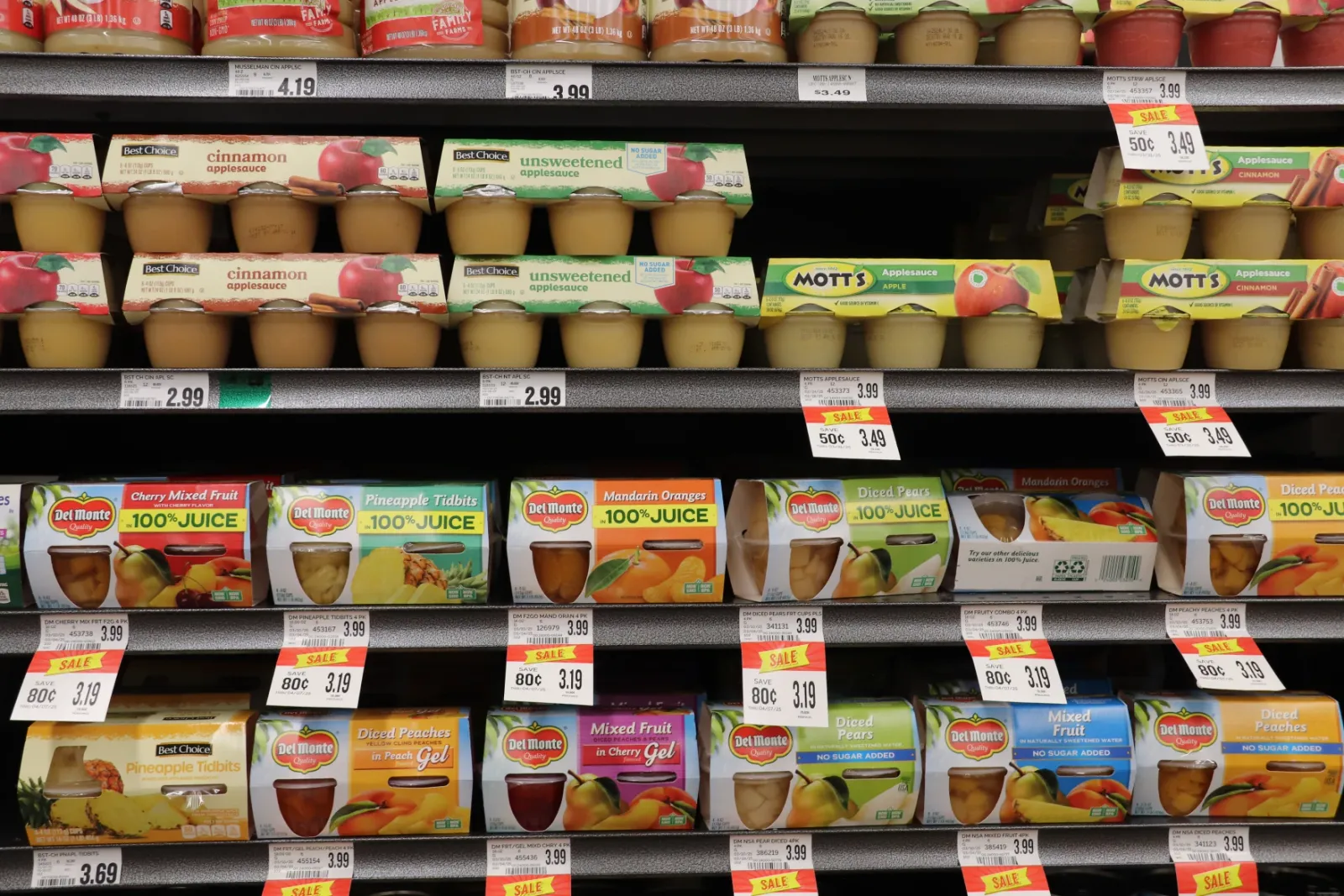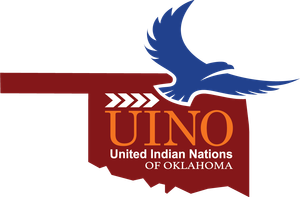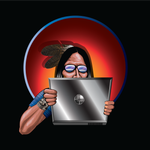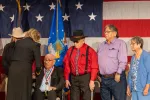

Oklahoma tribal nations prepare to fill food gaps as SNAP benefits could be suspended
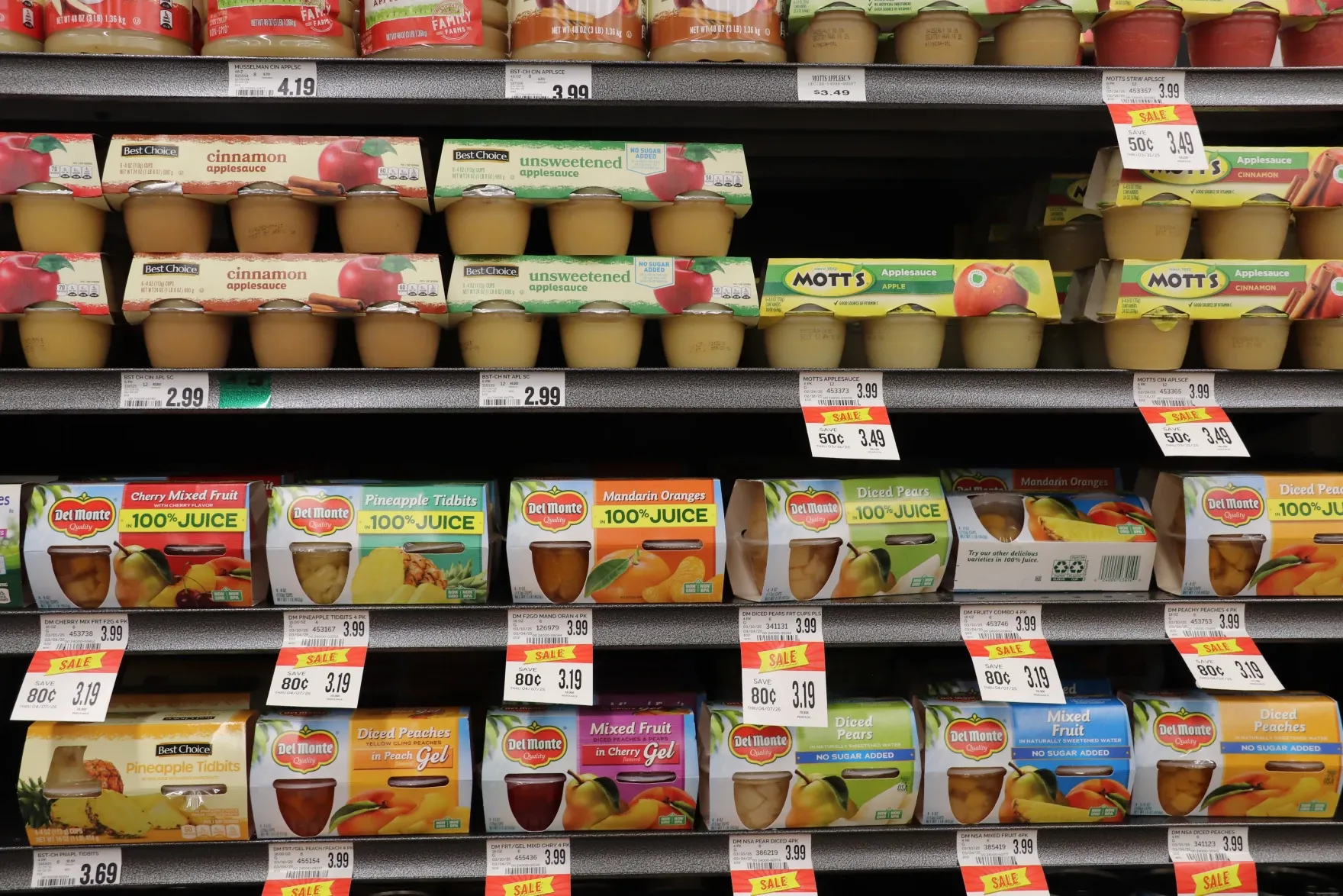
As food benefits for hundreds of thousands of Oklahomans could be canceled Saturday, tribal nations are pulling together resources for people if their benefits run dry.
By Anna Pope, KOSU
Supplemental Nutrition Assistance Program, or SNAP, benefits could be suspended starting Nov.1 unless Congress funds the government and ends a shutdown stalemate.
About 685,000 people in Oklahoma use the program to help buy groceries across the state, according to the Department of Human Services. In response, tribal nations are pulling together resources, including existing food aid, to help people avoid missing meals.
Many tribes in Oklahoma are concerned about the federal government shutdown’s impacts and are looking at ways to help feed people in the meantime. Cheyenne and Arapaho Governor Reggie Wassana said his tribal nation is looking at all the resources it can provide to SNAP shoppers who might not get their benefits.
“Now, we are preparing as if they won’t get them,” Wassana said. “However, we also feel that we’re hoping that Congress approves the budget and smarter heads prevail.”
He said he hopes Congress will also understand that millions of people, including the elderly, disabled and children, throughout the U.S. and hundreds of thousands in the state, aren’t in the position to secure their own food sources — and that they pass a budget to get food in their hands.
If they don’t, Wassana said the tribes will ensure the food distribution programs are well-stocked, allocate additional funding through the tribal legislators for the food pantry, and continue processing bison.
“If it does happen, we'll probably go out through cities throughout the State of Oklahoma and try to have some food tailgates that will help people be able to drive and maybe pick up some much-needed food supplies,” Wassana said.
Tasha Mousseau, vice president of the Wichita and Affiliated Tribes, said the tribe already operates under funding constraints. Because many of its citizens use federal programs, this creates additional strain.
But she said the tribal nation is trying to be proactive. Mousseau said her tribe is working to create resource lists, coordinate with food banks and food boxes to fill gaps.
“We're really trying to be a hub to connect them to resources and to create alternatives that will help feed their families in the interim,” Mousseau said.
Oklahoma is one of the most food-insecure states in the nation, according to the US Department of Agriculture. She said there is existing food insecurity in rural communities and tribal nations, which intersects with the Wichita and Affiliated Tribes. Mousseau said feeding people is not only about providing sustenance but it’s also an important part of their tribal culture.
“One piece of advice that I would give to all citizens, whether they're citizens of a tribal nation or citizens of the United States, is to really contact their legislators, their Congress people, to advocate for their needs,” Mousseau said.
In Eastern Oklahoma, the Muscogee Nation is gathering information on resources still available for people and what the tribal nation can do legally and monetarily. Jason Salsman, Muscogee Nation press secretary, said it’s an all-hands-on-deck situation.
“It very much reminds me of the early days of COVID, for us, and not only in the need and the need to pull all together, but in this sort of, OK, we've unlocked this door, but there's one locked behind it,” Salsman said.
While there is a big concern with SNAP benefits, Salsman said, the nation has also seen other impacts of the shutdown, such as furloughed federal employees and others worried about their grants or employment.
He said the main concern is that if more resources are needed, they're likely to come from other funding sources.
“It's becoming a real impact on people's nutrition, their food,” Salsman said. “That's how silly this has gotten to that we're now going to put people at risk of not receiving these basic human needs because we've got this stalemate in Washington.”

Government Shutdown Highlights Need to Reform How Federal Funds Support Native American Tribes, Brookings Report Says
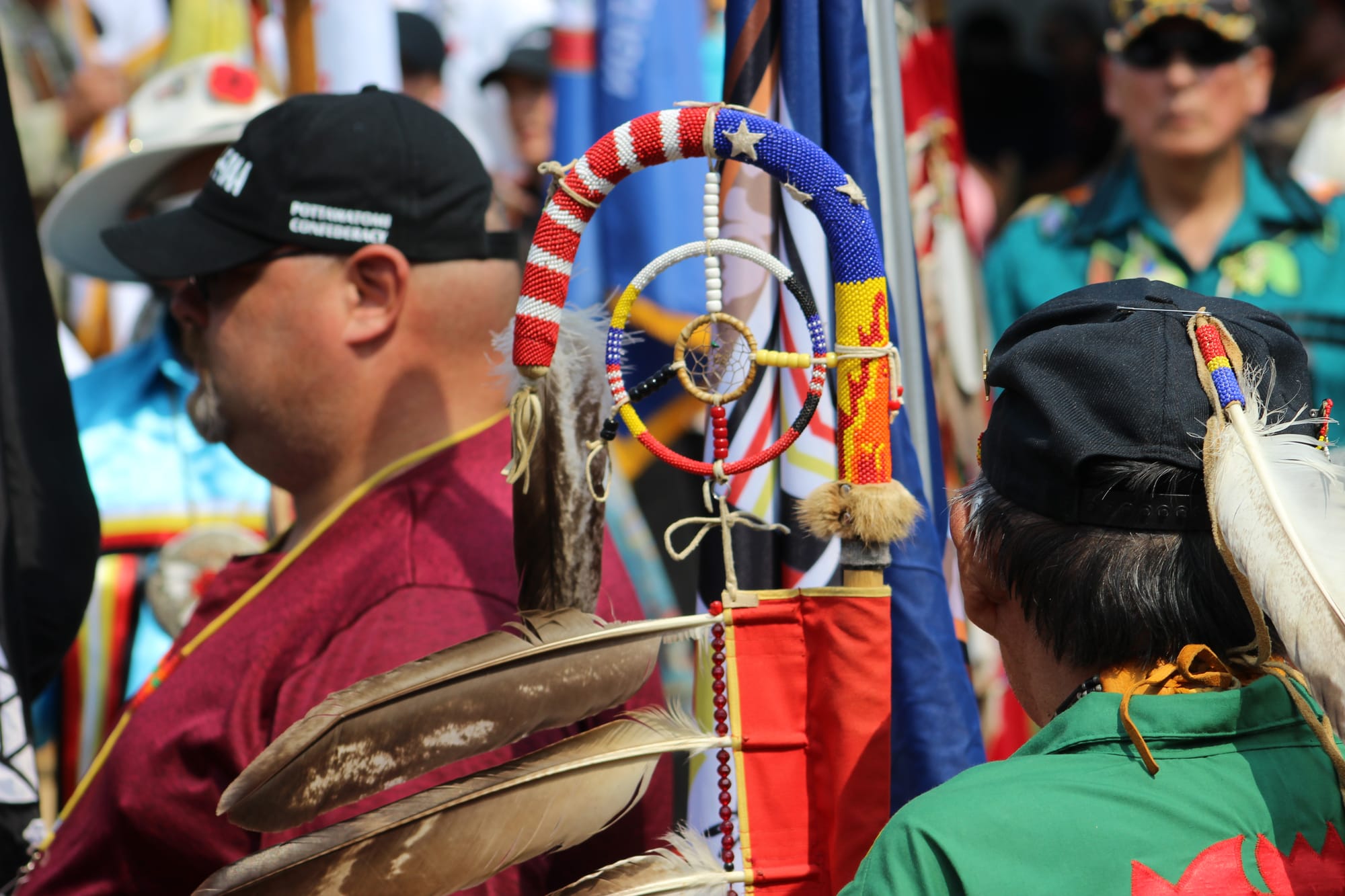
By Levi Rickert, Native News Online
The ongoing federal government shutdown is not only halting crucial services for tribal communities—it also underscores long-term structural flaws in how the federal government finances its obligations to Native Nations and Native American people, according to a new analysis released today by the Brookings Institution.
In the report, authors Robert Maxim, Liz Malerba, Glencora Haskins, and Danika Grieser argue that while the U.S. government maintains treaty and trust responsibilities to Tribal Nations, the funding mechanisms used to fulfil them are unstable and subject to disruption. “The federal government cannot effectively meet its obligations to Tribes and Native people if some of the most significant funding and programs… are forced to halt,” the report states.
Funding Reality vs. Legal Obligation
The study draws attention to the disparity between legal promises and actual funding. For fiscal year 2024, the federal “Native American Funding Crosscut”—which aggregates spending aimed at Tribes and Native people—listed approximately $37.5 billion in programs. But only just under $32 billion was obligated in that year, leaving $5.6 billion appropriated for future use.
However, Tribal advocates estimate far higher obligations. For example, the Indian Health Service (IHS) Tribal Budget Formulation Workgroup projects a minimum federal obligation of $73 billion—more than ten times the roughly $7 billion Congress appropriated for IHS in FY2025.
Discretionary Funding and Shutdown Risk
A central point in the analysis is that the majority of federal funding for Indian Country is “discretionary”—meaning Congress must annually approve it—rather than “mandatory,” which is less vulnerable to annual budget politics or shutdowns. In FY2024, about 69 percent of federal spending for Native‐related programs was via discretionary funding.
That means when the government shuts down, or when appropriations are delayed, many programs serving Tribal Nations are immediately at risk. The report highlights that during past shutdowns, IHS facilities were forced to furlough staff or operate without pay, and tribal health programs experienced supply shortages and service interruptions.
Examples of Impact
Although some protections exist, such as advance appropriations (which allow certain programs to continue despite a shutdown), these are rare. The IHS health services program has recently moved to use advance appropriations, but many other critical agencies do not. The Bureau of Indian Affairs (BIA) and the Bureau of Indian Education (BIE) are largely funded through annual discretionary appropriations, leaving them especially exposed.
The report notes that nearly all BIE funding and operations rely on these annual appropriations. For the BIA, more than 90 percent of its FY2024 funding came from discretionary sources.
Reform Recommendations
To address these vulnerabilities, the Brookings authors propose a two-pronged approach:
- Expand advance appropriations – In the short term, Congress could provide advance appropriations for all programs serving Native American people to match their FY2025 levels, ensuring continuity during funding gaps.
- Shift toward mandatory funding – The report argues that many programs serving Tribes should be financed through mandatory spending (similar to Medicare or Social Security) rather than annual discretionary budgets, given the ongoing, treaty-based nature of the federal obligations.
As the authors put it: “Subjecting Tribal Nations to discretionary and annual funding fails to uphold the United States’ trust and treaty obligations.”
A Critical Moment
With the government shutdown bringing real-world consequences—from suspended services to furloughed Tribal program staff—the report contends this is a pivotal moment for reform. “Rather than returning to business as usual,” the authors write, Congress should “re-evaluate and re-work how the federal government meets its funding obligations to Tribes and Native American people.”
As Tribal Nations continue to navigate the dual burdens of under-funding and funding instability, the Brookings analysis places a spotlight on systemic change—not simply more resources, but a fundamentally different funding architecture.
Choctaw Nation Hosts Interim Study on Drone Technology to Improve Rural Transportation Safety
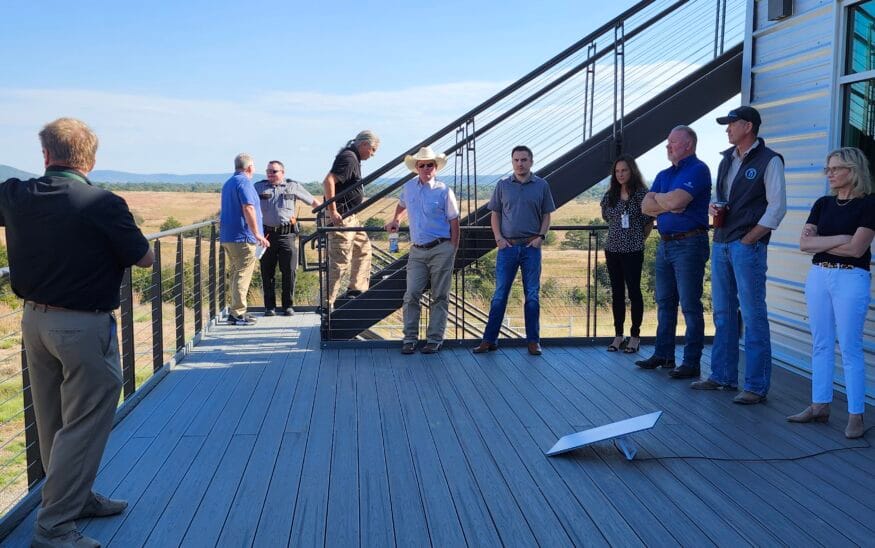
State legislators visit Daisy Ranch to explore how drones can save lives.
DURANT, Okla. – Oklahoma state leaders visited the Choctaw Nation of Oklahoma (CNO) to learn about the Tribe’s growing aviation technology program. CNO hosted a legislative interim study focused on how drones can help reduce fatal accidents on rural roads.
The event was hosted at CNO’s Emerging Aviation Technology Center on Daisy Ranch, a 44,600-acre stretch of remote, tribally owned land. The facility focuses on the technological development of advanced air mobility and drones, also known as unmanned aircraft systems (UAS).
“The U.S. faces many infrastructure challenges that drones may be able to solve,” said James Grimsley, executive director of advanced technology initiatives for CNO. “Continued investment in the CNO program positions Oklahoma as a leader in aviation technologies and a model for rural innovation.”
Members of the House Budget and Appropriations Transportation Subcommittee, along with select staff, joined CNO representatives for the event. Attendees included Reps. Jason Blair, Jonathan Wilk, Ryan Eaves, Josh Cantrell, Tammy Townley and Subcommittee Chair Nicole Miller.
Legislators toured the facility’s Remote Operations Center and observed a Beyond Visual Line of Sight (BVLOS) operations demonstration. They also visited the prototyping facility to view advanced drone manufacturing.
“In Oklahoma, approximately 65% of traffic fatalities occur on rural roadways,” said Grimsley. “UAS can lower fatal accident rates by limiting cars on the road for things such as deliveries. This study shows just one of the many ways drones can improve quality of life and safety.”
The presentation also highlighted the need for a clear regulatory path for operators and UAS traffic management services to ensure safe and efficient operations, thereby increasing capabilities and usage in the state.
“Working with our tribal partners and rural leaders, we can turn local ingenuity into statewide progress,” said state Rep. Nicole Miller. “By listening first and legislating second, we can craft policy that truly supports innovation in aviation and advanced transportation. I’m eager to take what we learned from today’s discussion and turn it into meaningful policy that strengthens opportunity across Oklahoma. Thank you to the Choctaw Daisy Ranch for hosting us.”
CNO is the only tribal government selected by the Federal Aviation Administration (FAA) to take part in national drone research programs and is the only tribal government participating as a lead participant in the follow-on BEYOND Phase II program, which focuses on expanding drone operations safely. CNO has also earned federal approval to test drones that can fly longer distances without being seen from the ground, or BVLOS.
Chickasaw artists represent at Southwestern Association for Indian Arts in Santa Fe
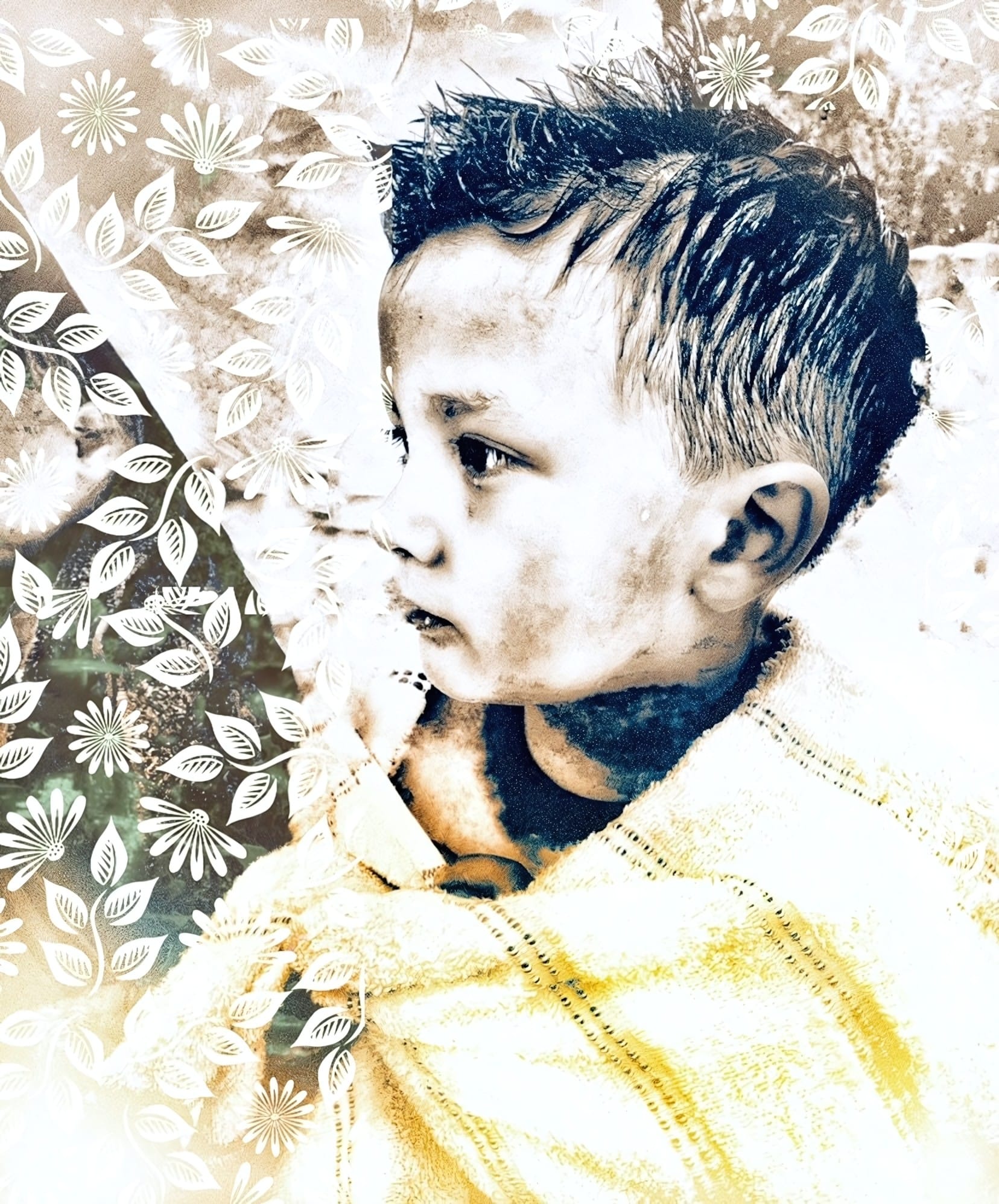
This year, six Chickasaw artists attended the Southwestern Association for Indian Arts (SWAIA) annual Santa Fe Indian Market in August. SWAIA is the largest juried First American art show in the world, with more than 100,000 people in attendance annually. Started in 1922, it is also the oldest. Each year they sponsor more than 1,000 First American artists from more than 100 tribal communities in North America and Canada, generating more than $160 million annually in revenues for artists and the community.
Of the six Chickasaw artists, three were participants and three chose to enter the competition. Each competition entry placed, one receiving Best in Show.
Daniel Worcester
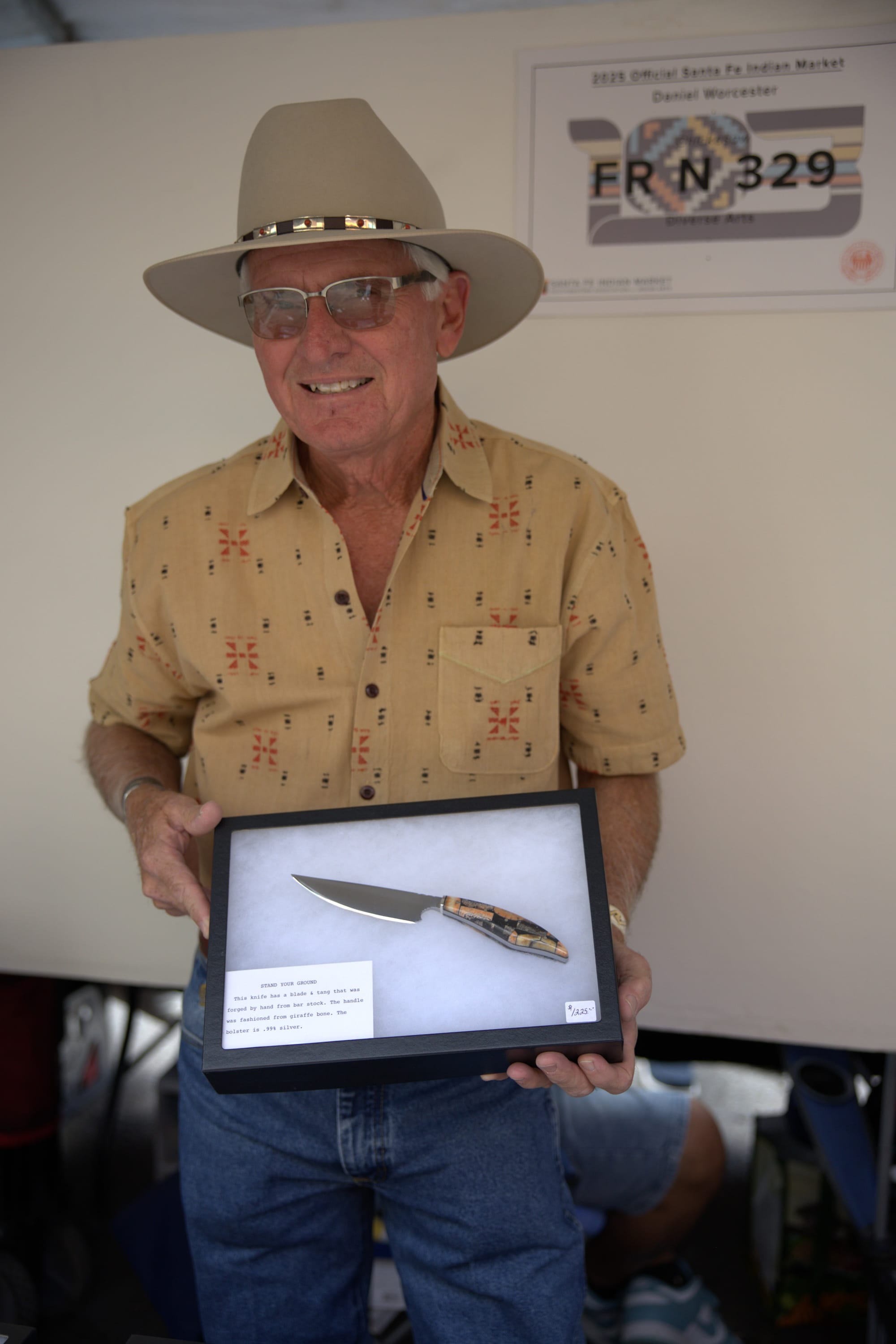
This was Daniel Worcester’s 32nd year at SWAIA. During the past three decades, Worcester has accumulated eight first place ribbons and was awarded the “Challenge Award” in 1999, the only year it was given. That special award was for an artist who was challenging the traditional concepts of art within their material or medium. This year due to scheduling, he decided to attend as a participant.
Worcester is an accomplished blade smith who incorporates his Chickasaw culture into every unique design he creates.
“I feel I am in tune with the land, the animals, nature. I like to bask in nature and let that flow into my work,” Worcester said. “Being Chickasaw gives a real appreciation for the land and your surroundings and the people. I like that I can connect with nature, art and with people.”
After 32 years at SWAIA, Worcester is still encouraging younger — or even older — artists to apply. Even though they might be scared to take that chance, it is worth it.
“As a Chickasaw artist it gives me great pride that I’m out here and my work is being accepted by people internationally who want to collect my work,” Worcester said. “These are the types of doors that an event like SWAIA can open for artists.”
Lisa Hudson
Lisa Hudson has always been fascinated with photography, but she didn’t seriously pursue it until she was at the Chickasaw Cultural Center working at the Holisso: The Center for Study of Chickasaw History and Culture. During her time there, she was inspired to capture the scenes and the people. She started experimenting with color and imagery, and developed a unique style all her own.
SWAIA is a special place for her. She went as a market participant this year and enjoyed meeting people and learning about others’ art.
“The thing I enjoy most about SWAIA is the vast array of people you meet. You meet artists and visitors from all walks of life and from all over,” Hudson said. “While each participant and tribe is unique, we all have a shared spirit that makes SWAIA a very special place.”
Her experimentation with color and imagery is clearly seen in one of her recent pieces, “Innocence,” which depicts her grandson, Oliver.
“I love how it captures the spirit of youth, a canvas untarnished with the endless possibilities of life ahead,” she said.
Tyson Hudson
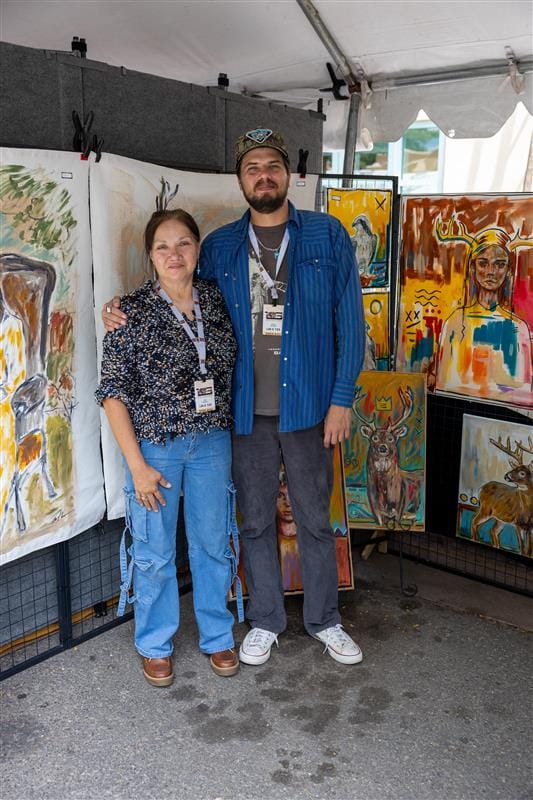
Tyson Hudson, Lisa Hudson’s son, first started painting when he was in college. He was pursuing a degree in graphic design but fell in love with painting. He particularly enjoys going to SWAIA because of the scale and high level of the art market.
“SWAIA is the highlight of the year for me and many other artists. It is a unique experience, and I always enjoy displaying my art for the large crowds and hearing the feedback,” Tyson Hudson said.
He is inspired by his Chickasaw heritage as well as artists from all different periods, specifically Edouard Manet.
“I incorporate our heritage in my art by sharing my love and respect for nature and my local wildlife,” he said. “Our ancestors shared this land with the animals that inhabit it, and I try to represent the beauty of our relationship with the wildlife.”
In addition to depicting nature and people’s relationship to it, Hudson is also interested in the relationship with one’s self, as seen in one of his more recent paintings, “Faded Grey,” where he focuses on solitude and introspection.
Melissa Freeman
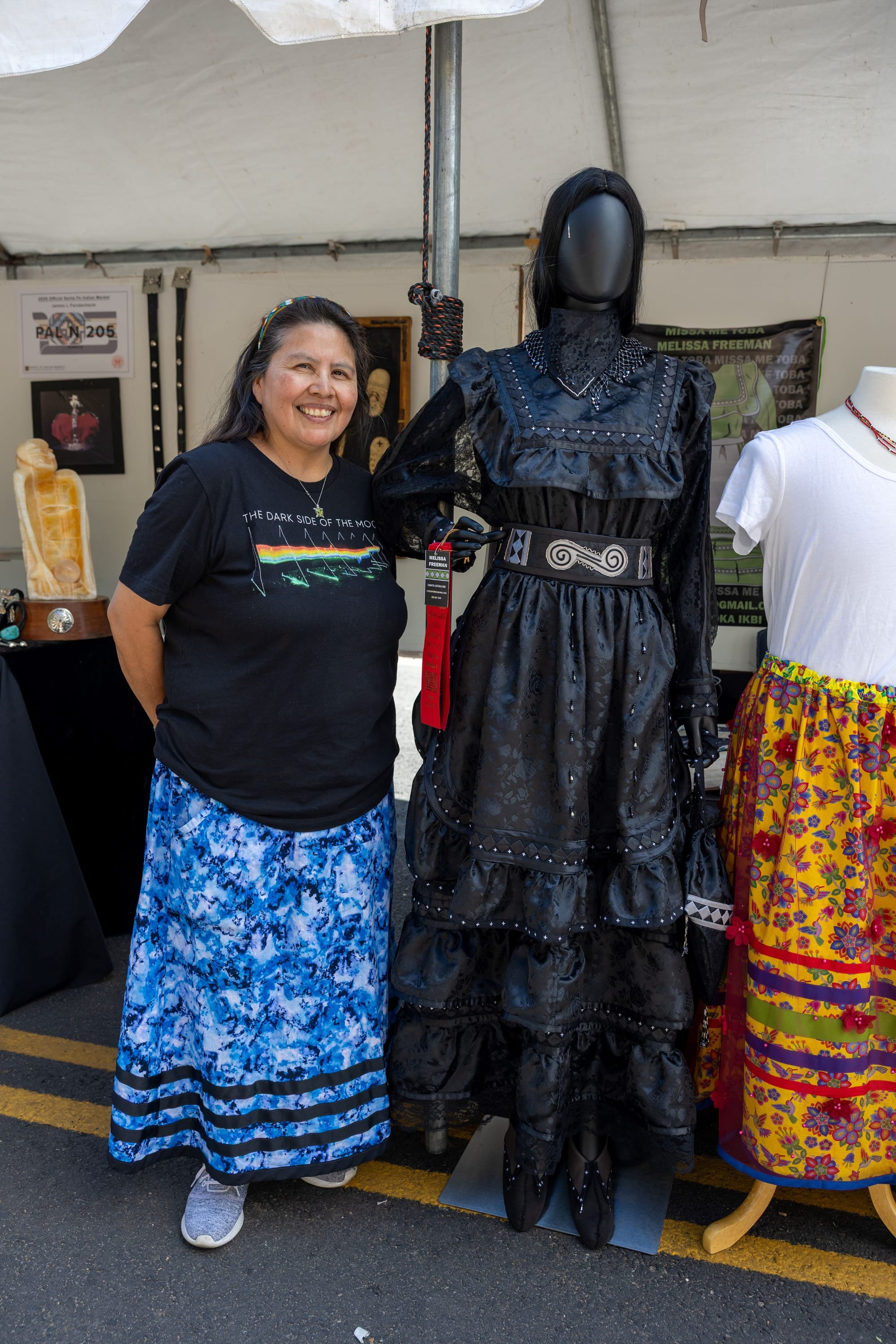
This was Melissa Freeman’s first year to enter SWAIA. The past few years she attended the Southeastern Art Show and Market (SEASAM), the Artesian Arts Festival and Hushtola, and those experiences gave her the confidence to enter SWAIA this year. She was glad she did, especially when she received the second-place ribbon in textiles for her dress “Onnahinli Okhlika/Dark Morning.”
Freeman created “Onnahinli Okhlika/Dark Morning” over the course of a month, working on it for 12-16 hours every day.
“It is a dedication to my father, created through fabric, beads and thread. I often call it my mourning dress,” Freeman said. “Before my father passed, I was overcome with a sadness I could not shake. This feeling propelled me to create this piece.”
Freeman’s work is a personal representation of her own lived experiences, but it also expresses and pays homage to her Chickasaw and Choctaw identity. She likes to incorporate the culture of the Chickasaw and Choctaw people into her work, and she is proud to share her creations at a venue as vast as SWAIA.
“I’m representing my ancestors who walked before me, who made many sacrifices and endured to afford me the opportunity to create art to share with all,” Freeman said.
Addison Karl
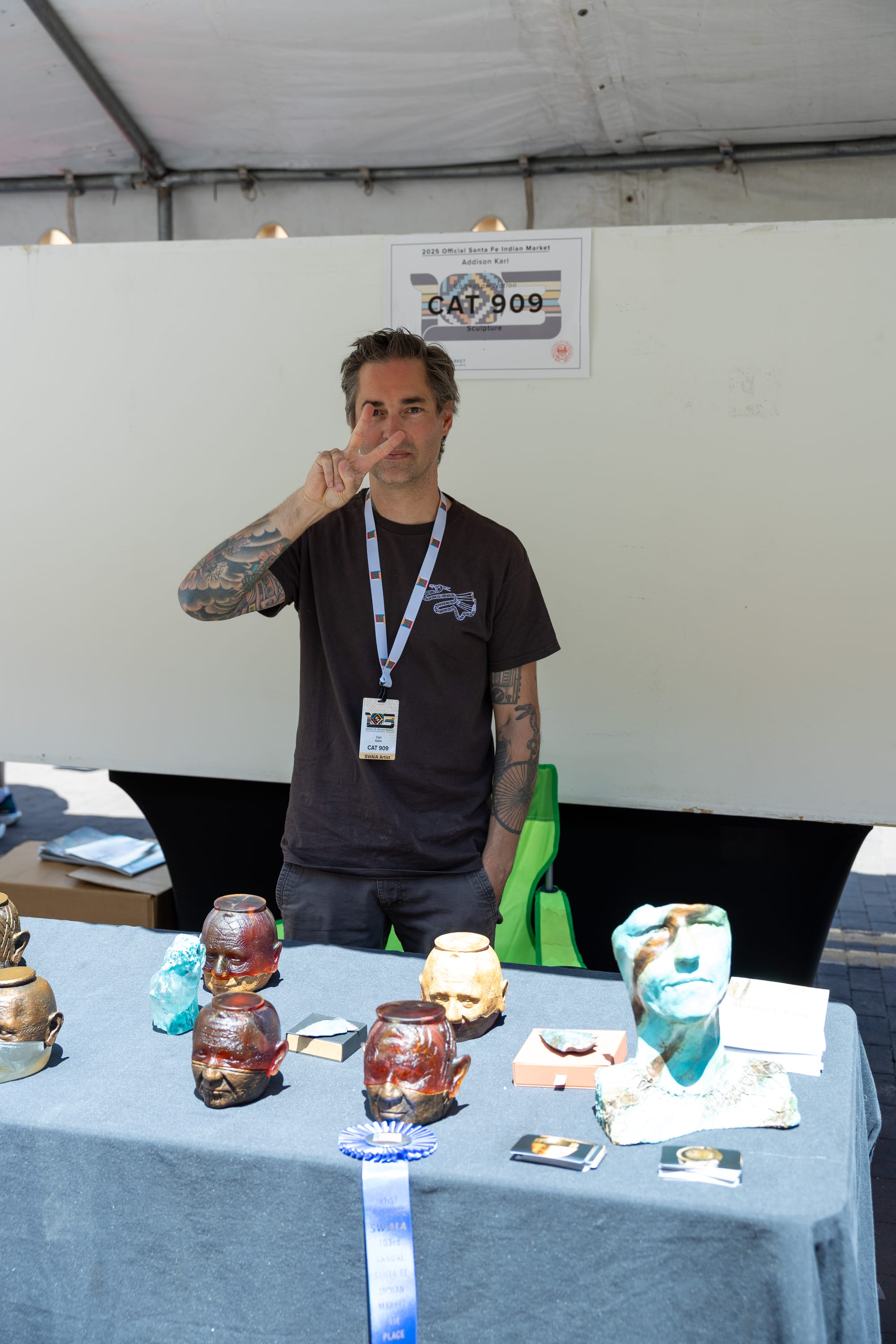
Addison Karl had never been to SWAIA before. Though he submitted his application to SWAIA, he was not selected for it this year but was put on a waiting list. In July, he was contacted by SWAIA to participate officially and his “Mississippian Period Effigies” won the first-place ribbon in glass sculpture.
The “Mississippian Period Effigies” were originally inspired by a conversation with Brent Greenwood about the exhibition “Visual Voices,” where he saw two original ceramic effigies. Addison wanted to combine bronze and glass to create a vessel that was influenced by the originals. Addison said he was proud of, “finding the balance between bronze casting and glass casting, and having these two worlds, for all their similarities, and then their major differences, clash together to create something.”
His Chickasaw heritage informs his art in many ways, between the aesthetics, language, storytelling and the influence of his grandfather, who, Addison said, had the largest impact on him.
“Most of it I didn’t understand through the eyes of a child or young adult. Now, mostly what I create begins with a memory or connection with him,” Addison said.
Regina Free
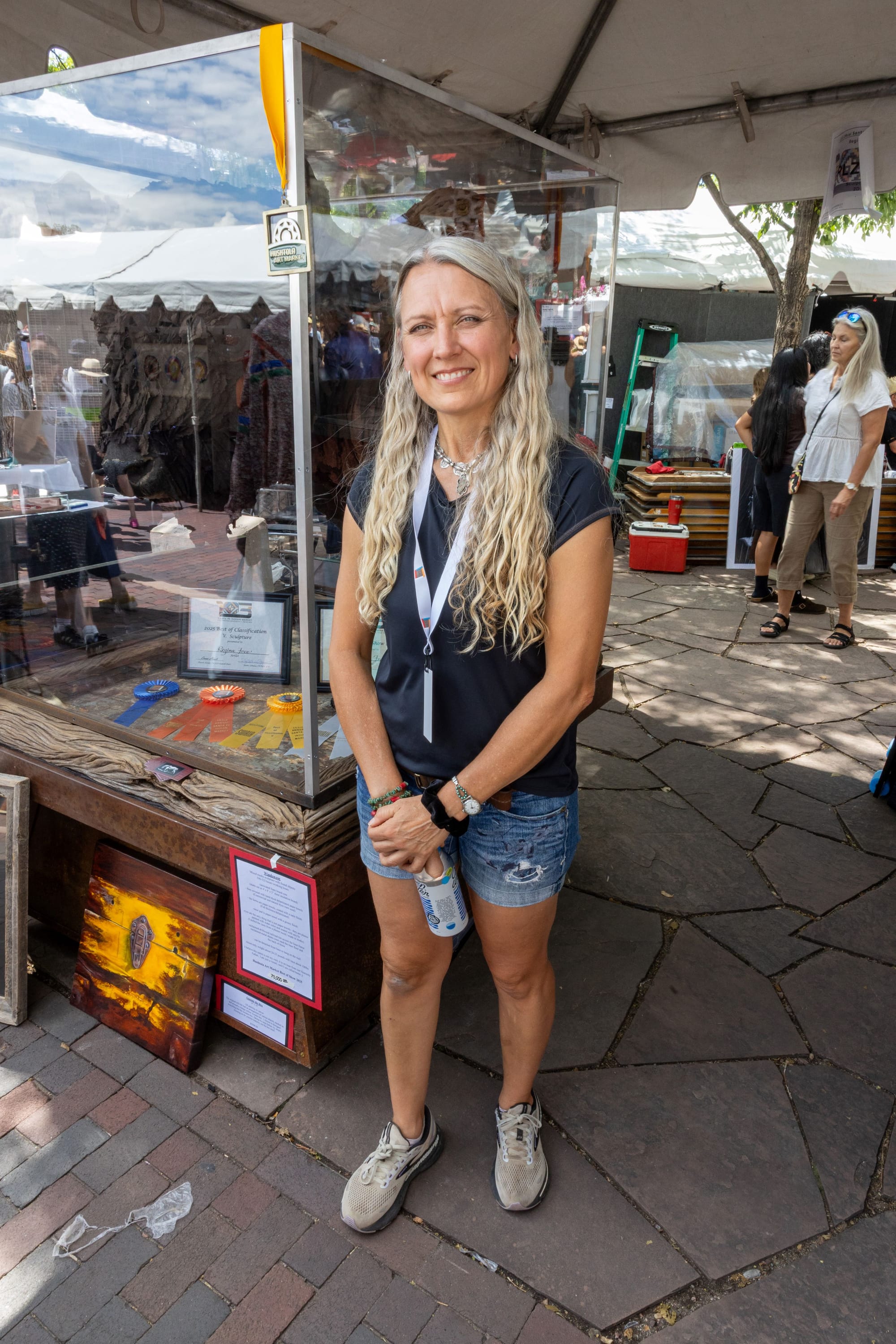
This was Regina Free’s first year at SWAIA and she was thrilled just to be accepted into the competition with her sculpture “Windswept.” As the event progressed her excitement grew exponentially as she was presented the first-place ribbon in sculpture and then, much to her surprise, awarded Best in Show.
“Windswept” depicts the head of a bison looking directly at the spectator. It is made of many materials, including clay, plaster, metal sheeting and paper towels. The variety of materials allows Free to capture the texture of the fur in a unique and realistic manner.
Free’s Chickasaw heritage is present in her choice of subjects — primarily animals — but also in the reverence and respect she feels for them.
“I try my hardest to have the spirit of the animal come through in what I’m doing,” Free said. “I try to leave a little drop of soul in everything I do. You can tell when a thing has soul in it or not.”
